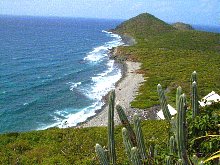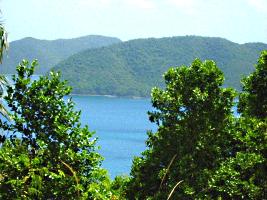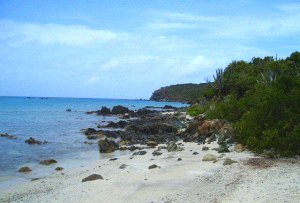|
The Virgin Islands Physical FeaturesThe Virgin Islands physical features are definitely one of the most appealing aspects of the islands. Gorgeous coastlines with white sand beaches, lush, green hillsides sweeping down to the bright turquoise waters, rugged mountains and green plains create a beautiful spectacle for the senses.

Each island has its own special character and unique physical features which set it apart and distinguish it from each of the other islands. 
Virgin Islands Physical Features: GeneralThe U.S. Virgin Islands are located at the western edge of the Lesser Antilles chain, and are bounded by the Atlantic Ocean to the North and the Caribbean Sea to the South. They're located roughly forty miles east of Puerto Rico, about 1,100 miles east-southeast of Miami, Florida, and situated at roughly 18 degrees north latitude and 65 degrees west longitude. |

